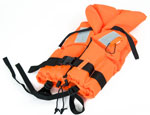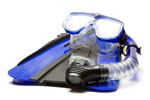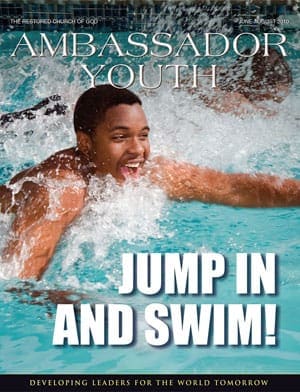Most people do not think about swimming unless it is hot outside. Yet, hot or not, it remains one of the most enjoyable pastimes.
Swimming, defined as movement through water without artificial help, is both healthy and pleasurable. Anyone can swim, regardless of body type, unless he or she has a severe physical disability.
In America, swimming is the second most popular form of exercise. Benefits include better cardiovascular health, stronger muscles and bones, and improved coordination. Swimming also burns more calories than most other forms of exercise. Because water supports a bodyâs weight, the impact on the joints is low compared to other sports.
Children can usually swim independently from the age of four, but mastering the skill can take many more years. A strong, healthy teenager can be an expert by the age of 15 if he starts young.
Although many people cannot swimâyou do not have to be one of them! It is never too late to dive in and learn!
Getting Started
If you have never been swimming before, look for a recognized aquatic school with qualified instructors. Swimming is not the same as learning to walkâyou must be taught the correct way to keep yourself afloat. Realize this may take time and effort.

Source: Canstockphoto.com
Many schools offer swimming as part of their sports programs. In most cases, you will start by learning how to float on your back and tread water. These are the most basic and important skills. In many swimming situations, a person spends time in one place. If you have nothing else to hold on to and the water is too deep to stand, you must tread water. This technique also helps conserve energy while swimming.
An instructor will also teach you about different strokes to help you move through the water more easily. These are the front crawl or freestyle, breaststroke, backstroke and the butterfly. Unless you participate in competitive swimming, you will mostly use the freestyle. It is the most common and fastest way to move through the water.

Source: Canstockphoto.com
To do the freestyle stroke, move your arms forward in a windmill-like motion, alternating from one to the other, pulling yourself through the water while facing forward and kicking your feet. You can perform this with your head above the water or with your face just under the surface. But donât forget to lift your head out of the water every few strokes so you can breathe!
If you already know how to swim, consider taking advanced swimming lessons. There are many examples of ordinary people who saved the lives of others in selfless acts of courage.
Science World reported that a 16-year-old boy, âwith strong swimming skills and ocean know-how,â who had trained as a junior lifeguard, rescued a nine-year-old boy caught in a riptide along a Southern California beach.
Be Careful
As with any other outdoor sport, swimming can be a dangerous activity. According to the U.S. Centers for Disease Control and Prevention, the highest incidence of drowning occurs among children under age five and those ages 15 to 24.
You should never overestimate your abilities. Always exercise caution and judgment when entering the water. Following are some swimming safety tips to help guide you.
- Never swim alone. No matter how good a swimmer you think you are, the dangers are too numerous to mention. Even if conditions look safe, you run the risk of developing cramps. If no one is there to help you, the situation could end with fatal consequences.
- Never jump or dive into a river, lake or reservoir where you cannot see below the surface. Too many accidents happen this way and can result in serious injury or paralysis.
- If you are not trained to do so, do not attempt to rescue someone flailing in the water, especially if there is someone else around who is more qualified. Often, a person who is in need of help will unintentionally drag the person trying to save them under the water with them, resulting in two drownings. Be available, however, to call for emergency services or help wherever you can.
Keep Learning
The best part about swimming is that it is one of the most affordable sports. All you need is an appropriate swimsuit and perhaps gogglesâand you are ready to go! Unlike other activities such as playing golf (which can cost many thousands of dollars in equipment or annual membership fees), swimming in most places is free!
Once you master the skill of swimming, you may discover that it is a hidden talent. God expects us to use our gifts to the best of our abilities. (Read Ecclesiastes 9:10.) If you are able to swim and find that you excel in it, you may even be able to obtain a part-time job as a lifeguard, which will allow you to tithe and help support the Work.
So jump in and swim! You may discover that your newfound swimming skills allow you to improve your physical capabilities and serve others in a way you never imagined.


















